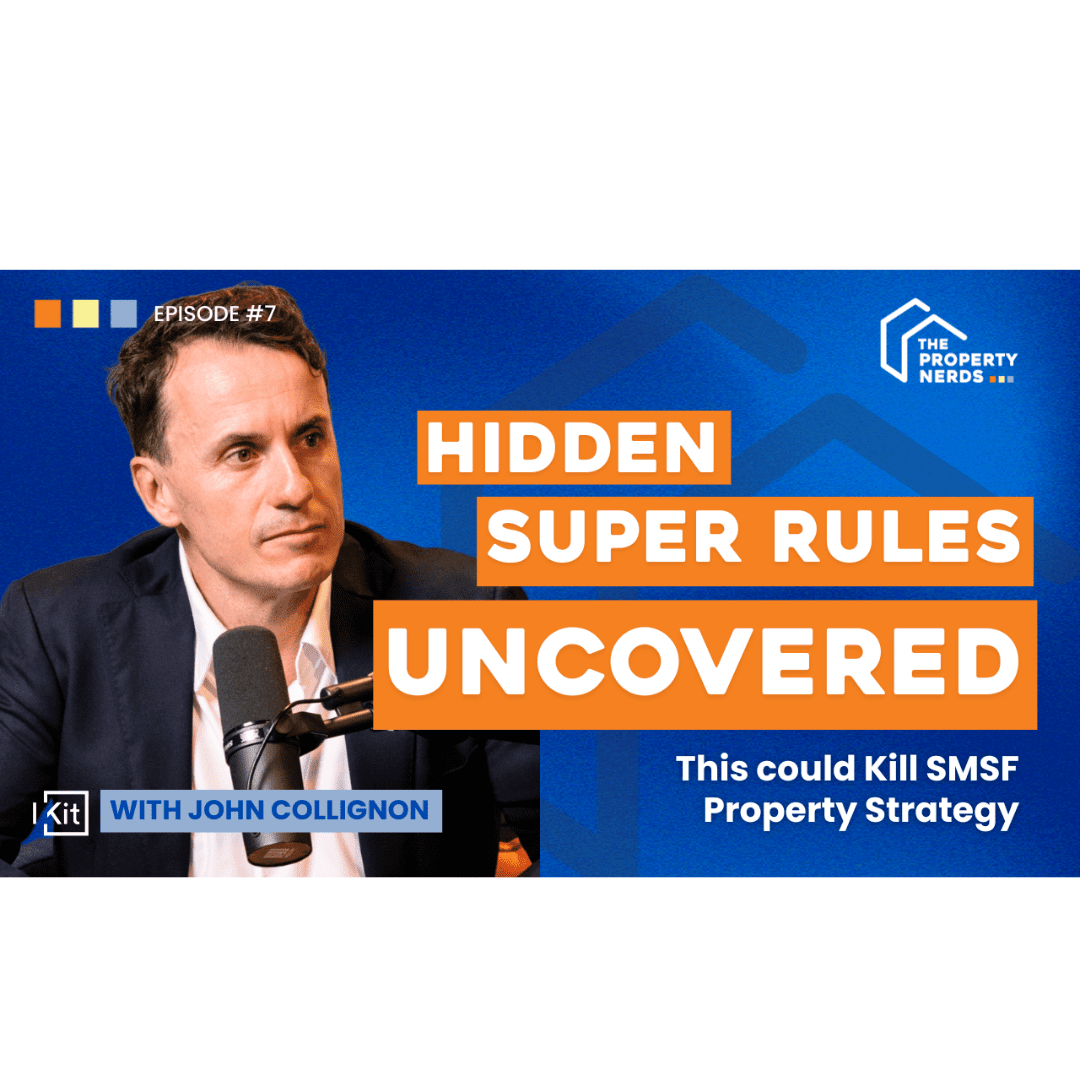With more political noise and legislative uncertainty clouding the future of superannuation, there’s never been a better time to understand what a Self-Managed Super Fund (SMSF) really is and who it’s actually for.
In this Property Nerds podcast episode, returning guest John from C2 Financial Group breaks down the latest changes, clears up the biggest myths, and shares what makes a successful SMSF strategy plus when it’s best to steer clear.
Division 296: The Tax That Could Change Everything
The SMSF world is buzzing over Division 296, a proposed tax targeting super balances over $3 million. The controversy?
It taxes unrealised gains, meaning you could owe money for growth you haven’t even accessed. And if passed, the ripple effects could be massive:
- Reduced investor confidence
- Less housing supply (fewer investors using SMSFs to buy property)
- Complex valuation issues across illiquid assets
“This policy could unintentionally penalise mum-and-dad investors just trying to build their retirement,” says John.
Greens’ Push to Ban Borrowing in SMSFs
Adding fuel to the fire, the Greens Party has proposed banning borrowing within SMSFs entirely and lowering the tax threshold to $2 million. If either of these ideas become law, they could completely reshape how Australians use their super to build wealth through property.
For now, borrowing rules still apply—especially to commercial property, where leveraging an SMSF remains a powerful, legal strategy.
Common Myths About SMSFs—Debunked
Think SMSFs are only for the ultra-wealthy or too risky for everyday Aussies? Think again.
John busts two of the biggest myths:
| Myth | Reality |
|---|---|
| “SMSFs are only for the rich.” | Setup/admin fees have dropped. Even with ~$200K in super, you can access property strategies at a similar cost to industry funds. |
| “SMSFs are risky.” | The risk comes from your decisions, not the structure. You can be as conservative—or aggressive—as your strategy dictates. |
Can You Buy Property in an SMSF?
Yes—but with some rules:
🏠 Residential Property
- Cannot be purchased from a related party (e.g. family)
- Must not be lived in by you or related persons
🏢 Commercial Property
- Can be purchased from yourself or your business if it qualifies as “business real property”
- You can even lease it back at market rates, turning your rent into super contributions
“Doctors, dentists, and business owners are doing this all the time—it’s one of the smartest SMSF moves,” says John.
Who Shouldn’t Use an SMSF?
SMSFs offer control—but that control comes with responsibility. John highlights a key red flag:
“If someone asks how our SMSF compares to AustralianSuper… they probably shouldn’t be setting one up.”
An SMSF isn’t a set-and-forget vehicle. You must understand your responsibilities around:
- Compliance and audits
- Strategy and risk
- Document and fund management
💡 Tip: Always speak with a financial advisor or SMSF specialist before setting one up.
Why Speed (and Service) Matters in SMSF Admin
C2 Financial Group stands out by focusing solely on SMSF setup and admin. That means:
- Fast response times (avoiding missed property deals)
- In-house specialists who handle all documentation correctly
- Audit-ready systems that scale effectively (700+ SMSFs under management)
“Most SMSF problems come from poor admin and missed deadlines—not the strategy itself,” explains John.
Final Thoughts: SMSF Isn’t for Everyone, But It’s Game-Changing for the Right Investor
SMSFs are about control, leverage, and diversification. But they’re not a silver bullet.
The key? Start with education, realistic goals, and the right support system—especially if you’re looking to use your super to invest in residential or commercial property.
Want to Explore SMSF for Property Investment?
Get in touch with C2 Financial Group by clicking here.
📧 Or contact Arjun at InvestorKit for a guided introduction and SMSF-compatible investment strategy.
Listen to the full episode for real-world insights, tax breakdowns, and strategy tips from one of Australia’s most trusted SMSF advisors.
.svg)




